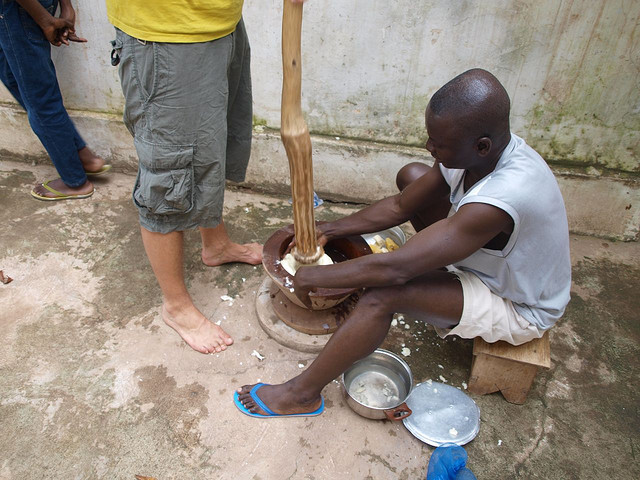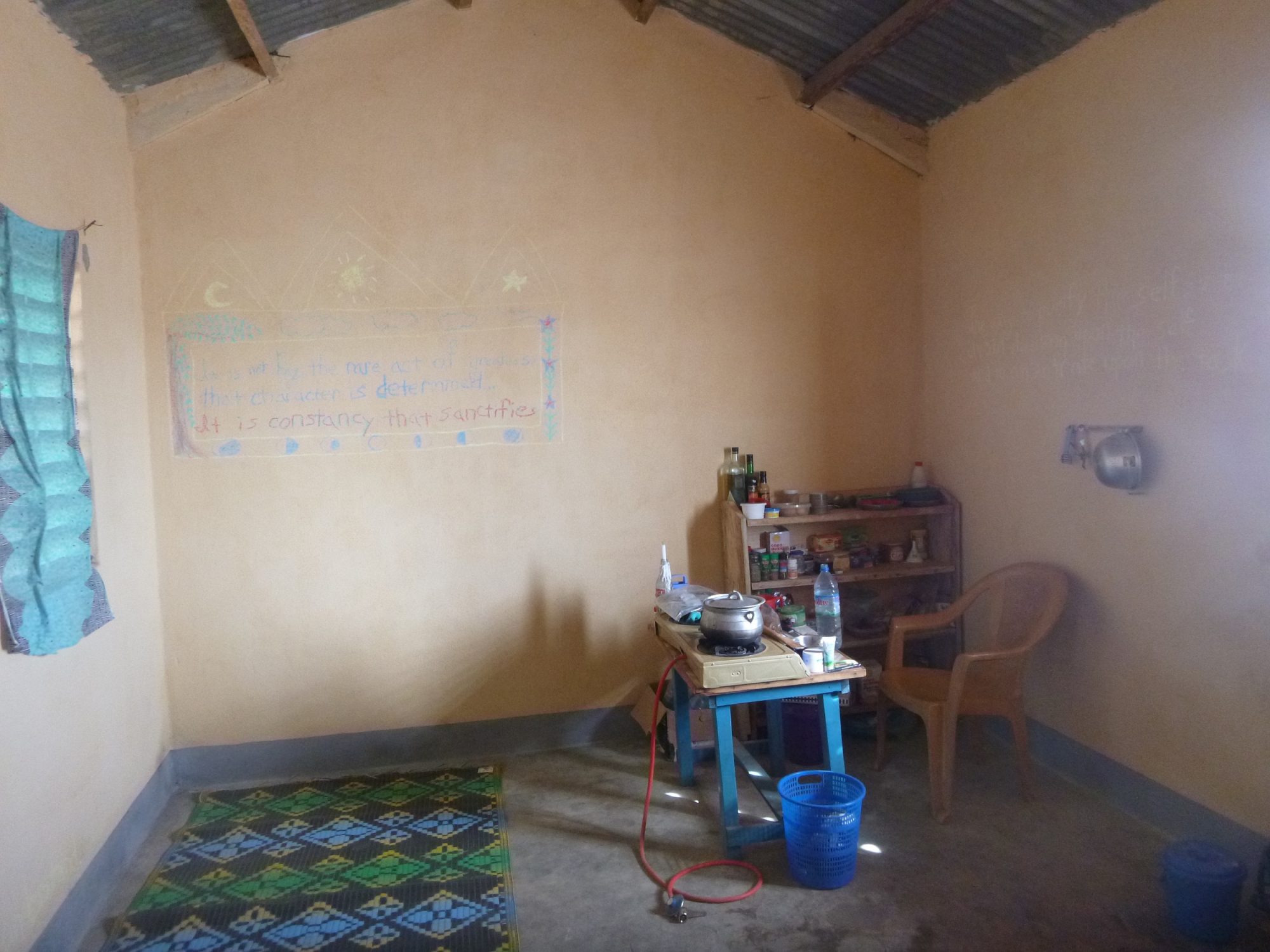Tuna burgers cooking. Image by Flickr user Hillary.
Let’s face it: Although sampling local cuisine is one of the highlights of visiting a new place, it can be nice to have a taste of home, especially when you’re facing a long-term stint abroad.
Village life in Togo doesn’t offer huge culinary variety, although moreso than I had expected prior to my arrival. I had heard that pounded yams with various sauces or fufu (and not much else) would be my staple during my time here, and so I envisioned a future consisting of day after day with nothing but boiled, pounded yams.
In reality, the northern region of Togo where I live grows corn much more extensively than yams. Due to this, the meal that most rural families eat twice a day is pâté, boiled cornmeal served with a dipping sauce that might consist of okra, baobab leaves, tomato, dried fish powder, spicy red pepper power (piment), or some combination of these ingredients, depending on the season and availability. At holidays and religious celebrations, each person might also get a chunk or two of meat — goat, sheep, guinea fowl, chicken, or cow.
Typical Togolese cuisine can include an assortment of other choices, such as rice and beans with a spicy sauce (watchi); a delicious grain mixed with a spinach-like green, which my village calls “African Couscous;” and a spicy fried tofu snack (soja).
I do enjoy eating with my host family, but sometimes when my taste buds are bored or my homesickness is unusually acute, I make myself some comfort food.

Men prepare fufu by pounding boiled yams until they reach a pizza dough-like consistency. Image by Flickr user febelix.
I am the fortunate beneficiary of a cookbook compiled by other American volunteers in Togo who have come before me. The title of this cookbook, Where There is No Whopper (affectionately nicknamed “The Whopper”), is a cheeky spoof on Where There Is No Doctor by David Werner with Jane Maxwell and Carol Thuman, something of a seminal text in the field of rural public health in developing countries.
Special thanks to Christa Register and Rebecca Fien who edited the 2012 edition that I have in my possession, as well as all of the preceding volunteers who contributed ideas that have encouraged me to experiment and have more variety in my diet than I thought would be possible!
Here are three of my favorite recipes, with a few of my personal tweaks. I’ve chosen these for the simplicity of prep time, ability to find ingredients in my closest market (seven km, or about four miles away), and for the uniqueness of the flavors involved compared to my typical village fare.
Mock Pad Thai
2 tbsp. powdered milk
1 tbsp. sugar
Salt, to taste
Juice of 1 lemon
1 cup water
1 medium onion, diced
4-6 cloves of garlic, minced
2 tsp. cayenne pepper (optional)
1 heaping tbsp. peanut butter
In a saucepan, sauté onion and garlic until onions are translucent. Add cayenne pepper and sauté for a minute. Add peanut butter and water, stirring until smooth. Add powdered milk, lemon juice, sugar, and salt. Simmer for several minutes. Toss with cooked noodles, and heat for 5 minutes.
Tuna or Salmon Burgers with Lemon Cream Dipping Sauce
1 can tuna
1 egg
1 small onion, minced
Salt and pepper
Oil for frying
½ cup bread crumbs
1 cup flour*
Drain tuna and combine with egg, onion, and bread crumbs. Mix well and let sit for 5 minutes. Mix flour, salt, and pepper. Shape wet ingredients into 6 patties, roll into dry mixture, and fry in oil until crispy. For added flavor, add in minced green pepper if you have one!
*If you don’t have flour on hand, leave it out and simply mix all ingredients together, increasing the amount of breadcrumbs until patties are firm.
Sauce for Tuna/Salmon Burgers
2 tbsp. margarine
2 tbsp. flour
¼ tsp. salt
1/8 tsp. pepper or lemon pepper
4 heaping tbsp. powdered milk
1 cup water
1 tbsp. lemon zest
The stove and kitchen in which the author will cook all of her food for two years. Image by Chelsea Clarke.
Village Mac and Cheese
½ package pasta
4 tbsp. powdered milk
2 tsp. salt
4 tbsp. margarine
2-3 tbsp. water
2 tsp. black pepper
Boil pasta. Drain and set aside. In a saucepan, melt margarine. Add powdered milk and water. Stir well to combine. Add salt and pepper. Toss with cooked pasta, and mix well to coat.
It has taken me a little while to get used to cooking all my meals on a portable gas stovetop. Of course, margarine doesn’t taste as good as butter, and powdered milk doesn’t hold a candle to the real thing. However, after while on the road and out in the village, I’ve found that if I’m willing to get creative, make substitutions, and learn from others’ ideas, having foods that even remind me of home makes a big difference!















































